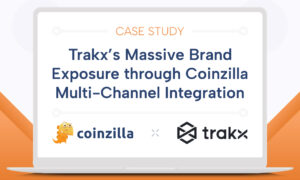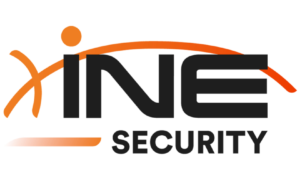The rise of Software-as-a-Service (SaaS) platforms has revolutionized the way businesses operate. Organizations increasingly rely on cloud-based services for their everyday operations, from customer relationship management (CRM) and collaboration tools to finance and HR management. With the benefits of accessibility, scalability, and flexibility, SaaS has become the backbone of modern business infrastructure.
However, as businesses migrate critical operations to cloud-based platforms, they face unique and complex security challenges. Ensuring the safety and compliance of SaaS environments is no longer just an IT concern but a strategic priority for businesses of all sizes. The complexities of managing data, identities, configurations, and compliance requirements across multiple SaaS platforms have created the need for specialized tools such as SaaS Security Posture Management (SSPM) solutions.
This article explores why SaaS security is essential for businesses and the growing importance of SSPM in securing SaaS environments.
The Growing Importance of SaaS Security
The State of SaaS Security: A Growing Concern
The rise of SaaS has also brought an increase in security incidents. Recent statistics highlight the scale of the problem:
- 43% of cyberattacks target SaaS applications, making them a significant vector for breachesding to a 2023 report by Gartner, more than 99% of cloud security failures through 2025 will be the customer’s fault due to misconfigurations, mismanagement of identities, and lax control over third-party integrations .
- A 20by BetterCloud found that 78% of IT leaders stated that unauthorized SaaS applications, also known as shadow IT, had increased security risks within their organizations .
These figures the need for businesses to adopt strong security measures to protect their SaaS environments. One solution that is gaining importance in this context is SaaS Security Posture Management (SSPM).
Here are some key SaaS security risks businesses face:
- Data Breaches: Unprotected SaaS environments are prime targets for cybercriminals. Misconfigured platforms, weak passwords, or excessive user privileges can lead to data leaks or breaches.
- Unauthorized Access: Without proper identity and access management (IAM), businesses risk unauthorized access to sensitive data by employees, third-party contractors, or external attackers.
- Misconfigurations: Misconfigured SaaS settings can open the door to vulnerabilities. Security misconfigurations, often caused by a lack of oversight or understanding of default settings, can lead to data exposure or non-compliance.
- Compliance Violations: Many industries are governed by strict regulations (such as GDPR, HIPAA, or PCI-DSS), requiring businesses to maintain specific security controls over their data. Failure to comply with these standards can result in heavy fines and damage to a company’s reputation.
- Shadow IT: The rapid adoption of SaaS applications often leads to employees using unsanctioned tools and applications, creating blind spots for security teams and increasing the risk of vulnerabilities.
Given the expanding threat landscape, businesses must actively manage their SaaS security posture, ensuring all applications are secure, compliant, and properly configured. This is where SaaS Security Posture Management (SSPM) comes in.
What is SaaS Security Posture Management (SSPM)?
SaaS Security Posture Management (SSPM) refers to the set of tools and practices that help organizations continuously monitor and improve their security posture within SaaS environments. SSPM solutions provide businesses with the visibility, automation, and analytics needed to identify misconfigurations, enforce security best practices, and manage risks associated with their SaaS applications.
Key Functions of SSPM Solutions
- Continuous Monitoring: SSPM tools monitor SaaS platforms for security weaknesses, misconfigurations, and policy violations in real time. They provide ongoing visibility into the security health of SaaS applications, ensuring that potential vulnerabilities are identified before they become critical.
- Configuration Management: SaaS applications come with complex configuration settings. SSPM tools help ensure that these configurations align with security best practices, industry standards, and regulatory requirements. They offer automatic detection of misconfigured settings that could expose data or compromise security.
- Compliance Management: Many SSPM solutions include compliance monitoring features that help businesses meet regulatory requirements by ensuring that SaaS environments adhere to standards such as SOC 2, GDPR, HIPAA, or CCPA. They provide audits and reports that help demonstrate compliance.
- Threat Detection and Response: Some SSPM tools integrate threat detection capabilities, identifying unusual behaviors, unauthorized access attempts, or data exfiltration. They can trigger alerts or initiate automated responses, reducing the impact of a potential breach.
- User Access Control: SSPM tools often include features that allow businesses to manage and restrict user access to SaaS applications, ensuring that only authorized individuals have access to sensitive data or configurations.
- Risk Assessment and Reporting: By evaluating the overall risk posture of a SaaS environment, SSPM solutions can provide detailed reports that help businesses understand potential vulnerabilities, prioritize remediation efforts, and track improvements over time.
Why Businesses Need SSPM for SaaS Security
As businesses adopt more SaaS platforms, managing security across multiple environments becomes increasingly challenging. Manually tracking and configuring each SaaS application is not only inefficient but also prone to human error. SSPM solutions address these challenges by automating and streamlining SaaS security management.
Here are some reasons why SSPM is crucial for modern businesses:
1. Centralized Security Management Across Multiple SaaS Platforms
Most businesses today rely on multiple SaaS applications. Each of these platforms comes with its own security settings, making manual oversight difficult and time-consuming. SSPM tools provide a centralized view of all SaaS applications, enabling security teams to manage and enforce consistent policies across the board.
2. Reduction in Human Error
Misconfigurations caused by human error are one of the leading causes of security breaches in SaaS environments. SSPM tools automate configuration management, reducing the risk of human mistakes and ensuring that security settings align with best practices.
3. Compliance Enforcement
Many industries face strict regulatory requirements, and failure to comply can have significant financial and legal repercussions. SSPM tools simplify compliance management by automating audits, providing detailed reporting, and ensuring that SaaS platforms meet necessary regulatory standards.
4. Improved Incident Response
In the event of a security incident, the ability to detect and respond quickly is critical to minimizing damage. SSPM solutions often include real-time monitoring and alerting, helping businesses detect security incidents as they happen and respond effectively.
5. Visibility into Shadow IT
SSPM tools provide visibility into unauthorized SaaS usage, known as shadow IT, which can create security gaps. By identifying and monitoring unapproved SaaS applications, businesses can reduce the risks associated with uncontrolled third-party platforms.
Choosing the Right SSPM Solution
When selecting an SSPM solution, businesses should consider several factors to ensure it meets their security needs:
- Integration: The SSPM solution should integrate seamlessly with all the SaaS applications in use, providing comprehensive visibility and control.
- Automation: Look for a tool that offers automated monitoring, alerting, and remediation to reduce manual workloads and improve efficiency.
- Scalability: As your SaaS usage grows, the SSPM solution should scale accordingly to provide consistent security coverage across new applications.
- Compliance Features: Ensure the SSPM tool can support your industry-specific compliance requirements with robust reporting and audit capabilities.
Conclusion
SaaS platforms have become indispensable to modern businesses, but they come with security risks that must be managed effectively. As organizations adopt more cloud-based applications, the complexity of securing these environments grows. SaaS Security Posture Management (SSPM) solutions provide businesses with the tools needed to protect their data, ensure compliance, and maintain a strong security posture.
By continuously monitoring, detecting misconfigurations, and automating security processes, SSPM solutions empower businesses to leverage SaaS applications confidently, knowing that their critical assets and sensitive data are secure.



































